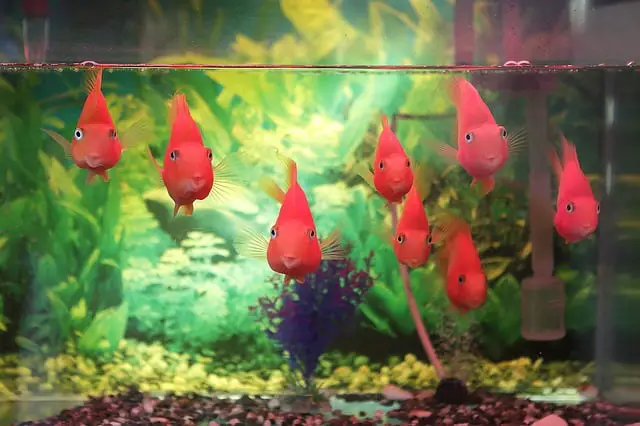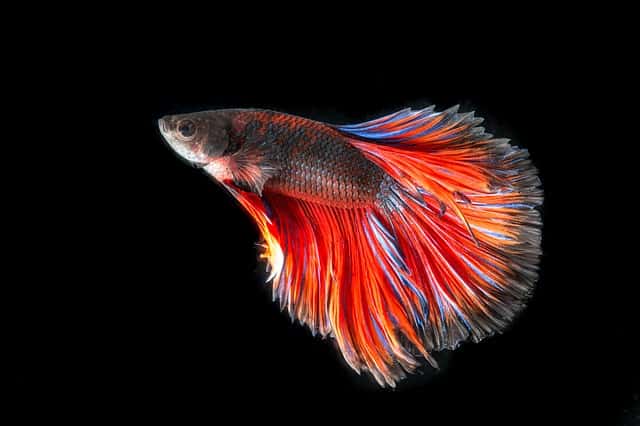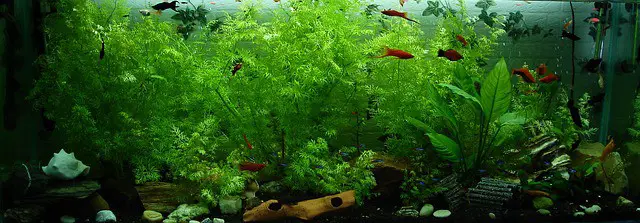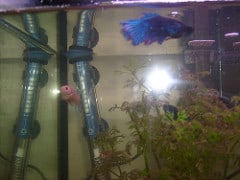Lately I have noticed my aquarium looking ‘dirty’ (i.e. particles floating in the water, a film on the glass, gravel appears slimy, growth on the substrate of the tank). So the question arises, “does aquarium gravel need to be washed?”
Does aquarium gravel need to be washed? Aquarium gravel should be cleaned as it sits in your tank. Decaying matter like fish waste and food will often get trapped in the sand, turning black, and raising the ammonia levels in the tank. These toxic gases can kill fish so it is imperative to wash the gravel at least twice a month.
How to Wash Your Aquarium’s Gravel
- Consider this first option as the best one! Use an aquarium gravel vacuum or siphon. Place the siphon into the water just above or slightly touching the gravel and drain up to 25% of the water into a bucket or sink. Discard this water as it contains all of the particles you want to rid the tank of.
- If you choose to remove the fish prior to cleaning, place them in a large glass (if the fish are very small) or container using tank water. Cover the containers if possible to prevent fish from jumping out. If the container does not have a lid, simply place plastic wrap or a plate on top. Do not place fish in direct sunlight or near a vent as this will cause a change in the water temperature.
- Place the siphon into the tank right above or slightly touching the gravel and carefully move it around. Gravity will draw the waste and excess food particles out of the gravel. To get the most thorough clean possible, use an aquarium rake to move the sand and loosen any trapped debris.
- Remember if you have a sand substrate do not place the siphon directly into the sand, rather simply ‘hover’ above it. Experiment to find a height at which the waste is removed but the sand remains.
If you are looking to purchase an aquarium siphon/vacuum I recommend checking out the options on Amazon. I personally like this one. FISH TANK VACUUM.
This siphon comes with a 25’ hose so you can conveniently dump the siphoned water directly into a sink instead of a pail and risking the chance of spilling the water out of the pail. There are other styles of siphons available on Amazon you can check out as well.
If you prefer pumping the water into a pail this is a great option and it even comes with a primer pump so you don’t have to suck on the opposite end of the tube to get it started. FISH TANK GRAVEL CLEANER WITH PRIMER PUMP.
Another option if you maybe don’t want to siphon the gravel but just want to move some of the gravel around to free some debris in the tanks current to get picked up by the filter you could use an aquarium rake. An aquarium rake is even good just to poke around on the bottom moving objects around and stirring things up before you vacuum. Koller makes an affordable multi tool rake and algae scraper that I would definitely recommend. Just check out the reviews if you are curious. Koller Multi Tool.
Let’s carry on with ways to wash your tank’s gravel.
- Some bottom feeder fish such as Rams horn Snails (and other snails) and Plecostomus also help keep the aquarium clean. Rams horn Snails clean plants, rocks and walls in the aquarium. Pleco fish clean wood, rocks and stone and eat ‘leftovers’ at the bottom of the tank. Cleaner fish are an essential part of maintaining a healthy tank naturally.
- If an aquarium vacuum or siphon is not available, you can clean the gravel manually. Start by removing the fish, placing them in separate containers filled with tank water. Then scoop the gravel out. Place it in a colander over the sink and pour water over it. Stir the gravel, drain and repeat until the water runs clear and no debris remains. Do not use detergent or soap as these can be toxic to the fish.
- Remember to unplug all electrical elements in your aquarium such as heaters, pumps and filters! No electricity of any kind should be running through the tank as you handle water in or near it. Chances are nothing will happen however, it is not worth the risk! Don’t be the person who gets a shot of electricity while cleaning his or her tank’s gravel!
Related questions;
Is aquarium gravel necessary?
- Gravel or substrate is not necessary but it does improve the overall ‘health’ of an aquarium. It prevents food and fecal matter from floating freely in the tank which not only makes the tank look dirty, but is also potentially hazardous to the fish.
- Also, many fish thrive in a tank with gravel as sifting through it is part of their natural behaviour. Think of Plecostomus and Cory catfish, for example, that are endlessly scouring the bottom of the tank. Or loaches that will burrow into the gravel and sand to hide and feel safe.
Does aquarium gravel need to be replaced?
- I can’t think of a good reason to replace your tanks gravel unless a disease such as ich (ichthyophthirius multifiliis or ectoparasite) infected your fish and you want to ensure that any remnants of the ich have been cleaned out.
- Or possibly you wanted to change the setup inside the aquarium for something different. If you do this I would recommend removing the fish before doing so.
- Replacing aquarium gravel is an intense and invasive process and requires all fish to be removed from the tank. If at all possible, use an aquarium vacuum or siphon to clean the gravel instead of replacing it.
How deep does aquarium gravel need to be?
- To ensure your tank benefits from healthy bacteria you should ensure you have at minimum two inches or 50 millimeters deep of gravel of some other sort of substrate.
- If you decide you do not want a couple of inches of substrate on the bottom of the tank you could take advantage of using an under -gravel filter to help get rid of the waste that tries to settle on the bottom of your aquarium. If you are placing at least a couple inches of substrate in the tank then an under-gravel filter won’t work as effectively as it should and would be a waste to install.
- I realize some tanks hardly have any gravel however those tanks would be creating beneficial bacteria in other locations of the tank. Possibly a corner filter or other filter that is only cleaned when it is absolutely necessary. Bacteria will also accumulate on the walls of the aquarium so if you don’t clean the clean crystal clear it’s not a bad thing.
Does aquarium gravel raise PH?
- Limestone in the rock will elevate PH levels in a tank. Saltwater fish prefer a PH of 8 or above whereas Freshwater fish thrive in a lower range, usually between 5.5 and 7.5. Make sure your PH levels are appropriate for the water type you have in your tank. If you need to learn more about PH and Alkalinity check out this article.
- It is important to monitor the PH level in the water, as it can fluctuate. You can purchase a chemical test online or at your local pet shop to check for these fluctuations. This chemical test will ensure that the ammonia and nitrite levels have not reached a harmful amount.
In conclusion, cleaning your aquarium’s gravel is an essential component of maintaining a healthy tank. The most important function of aquarium gravel is to provide a ‘home’ for beneficial bacteria. It is this bacteria that helps to eliminate fecal matter, leftover food particles and plant debris in the tank. Taking the time to clean the gravel will help your fish thrive and keep the aquarium looking attractive to the viewing eye.





